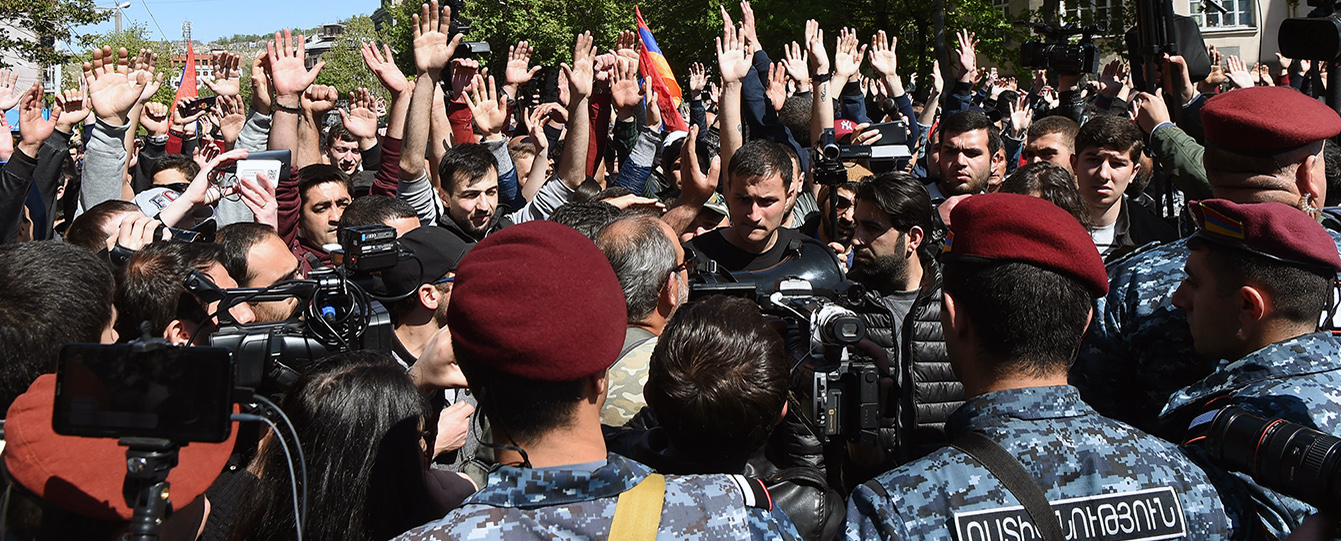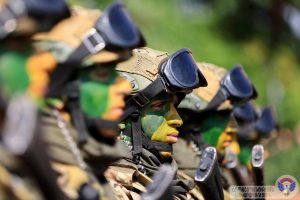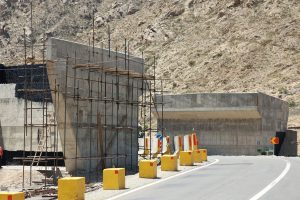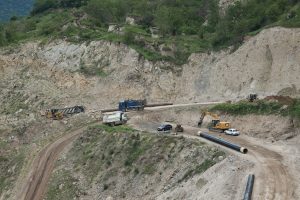Civil disobedience protests have closed central streets in the Armenian capital, Yerevan. The protests grew especially intense on Monday, April 16, when thousands of protesters took to the streets, brought traffic to a halt.
Why?
People are protesting the announcement made on Saturday by the ruling Republican Party of Armenia (RPA) that outgoing President Serzh Sargsyan will be approved as Prime Minister on April 17, 2018. The protestors consider this change of role undemocratic, as it allows Sargsyan to remain in power when his second term as President has concluded.
An amendment to the RA Constitution in 2015, makes the Government, not the President, the supreme body of executive power of Armenia from April 2018. From now, the Prime Minister, being the head of the Government, will be its most powerful member. Sargsyan’s Presidential term concluded on April 9. At the time the constitutional amendment was made law, Sargsyan said he would not seek office as Prime Minister. Now the RPA seek to confirm him in this position.
Under the amendment, the Prime Minister of Armenia will be responsible both for the domestic and for the foreign policy of the country. He will head the National Security Council. In addition, the National Security Service, the State Protection Service, the State Control Service and the Police will be under the Prime Minister’s control. Once a new Prime Minister is confirmed, Government sessions will be held behind closed doors.
The National Assembly elects the Prime Minister for a five-year term, and there is no restriction on the re-election of the same person after expiration of the term. Protesters believe the Constitutional amendment was engineered by Sargsyan while President in order to subvert Presidential term limits, and allow his grip on power to continue indefinitely.
The protests are likely to be more intense on April 17, because of the vote for the Prime Minister by the MPs at the National Assembly. Baghramyan Avenue is equipped with police equipment; there is a water cannon in the area, at least 2 police armored vehicles, and 5-6 dozens of buses full of police forces.
As of 14:00 there are 80 citizens detained. According to the police, the detained are suspected of administrative offenses.
The Police issued a statement on their readiness to carry out their duty at any time thus urging the rally participants to refrain from illegal actions to avoid unwanted consequences. Taking into consideration the consequences of such actions, the police called on journalists to maintain a reasonable distance from the protesters.
In turn, the movement leader Nikol Pashinyan stated on a velvet revolution in the country and called the protesters to block the state buildings.
How the Prime Minister Was Elected?
Voting for the Prime Minister took place during the special session of the National Assembly on April 17. Although the protesters have stated before they would make every effort to prevent this session, however they couldn’t succeed. The session happened and the Prime Minister was elected. The National Assembly voted 77 to 17 to elect Serzh Sargsyan as the Prime Minister of Armenia.
Sargsyan’s nomination by RPA was supported also by the Armenian Revolutionary Federation Party who form the current coalition government with the ruling party. On April 16, the coalition unanimously approved nomination of Sargsyan’s sole candidacy for the Prime Minister’s position. In an interview with the Russian “Izvestia”, Serzh Sargsyan reaffirmed his readiness to remain in office, though at the meeting held with members of the Specialized Commission for Constitutional Amendments in 2014 he promised that he would not stand for this office. The new President Armen Sarkissian, according to the amended Constitution, was elected by the National Assembly not by the public vote on March 2, 2018. Before his nomination as the ruling Republican Party’s pick for president on January 19, 2018 by the ex-President Serzh Sargsyan, Armen Sarkissian was Armenia’s ambassador to the United Kingdom. (No relation between the ex and incumbent presidents.)
Demonstrators Actions on April 16
Early in the morning of April 16, protesters blocked a number of central streets of the city: Baghramyan and Arshakunyats avenues, Kievyan street, and Abovyan-Koryun crossroad. The heinitiators tried to close down a number of Metro stations, including “Yeritasardakan”, “Shengavit”, “Republic Square”. The Metropolitan Administration, in turn, closed the station “Marshal Baghramyan” close to the Presidential Office and the building of the National Assembly.
A clash took place between some unknown men and students who had closed Heratsi Street. The men came out of a car and began beating the students, then they drove the car into the students and breached the students’ line. As a result, some of the students were taken to hospital.

At 16:40 the demonstrators gathered at Baghramyan Avenue. The road stretching to the building of the National Assembly was closed with barbed wire. A large number of policemen were standing right behind the wires.
As a result of a clash between the protesters and the police, Police used batons and stun grenades which resulted in multiple injuries. 46 citizens of Yerevan have applied for medical treatment, 6 of whom are policemen. This is reported by the Ministry of Health in Armenia. Some of the patients receiving outpatient medical care were released, among them Nikol Pashinyan. Nobody’s life is in danger.
Calls for civic disobedience were followed also in cities Vanadzor and Gyumri where the citizens blocked the building of the Shirak regional administration.
On April 16, the police issued a statement demanding Nikol Pashinyan, member of the “Civil Contract” Party constituting part of the opposition “Yelk” faction represented in the National Assembly, to cease the rally in the city. If the crowd did not disband, police said they would disperse the rally with special measures and force.
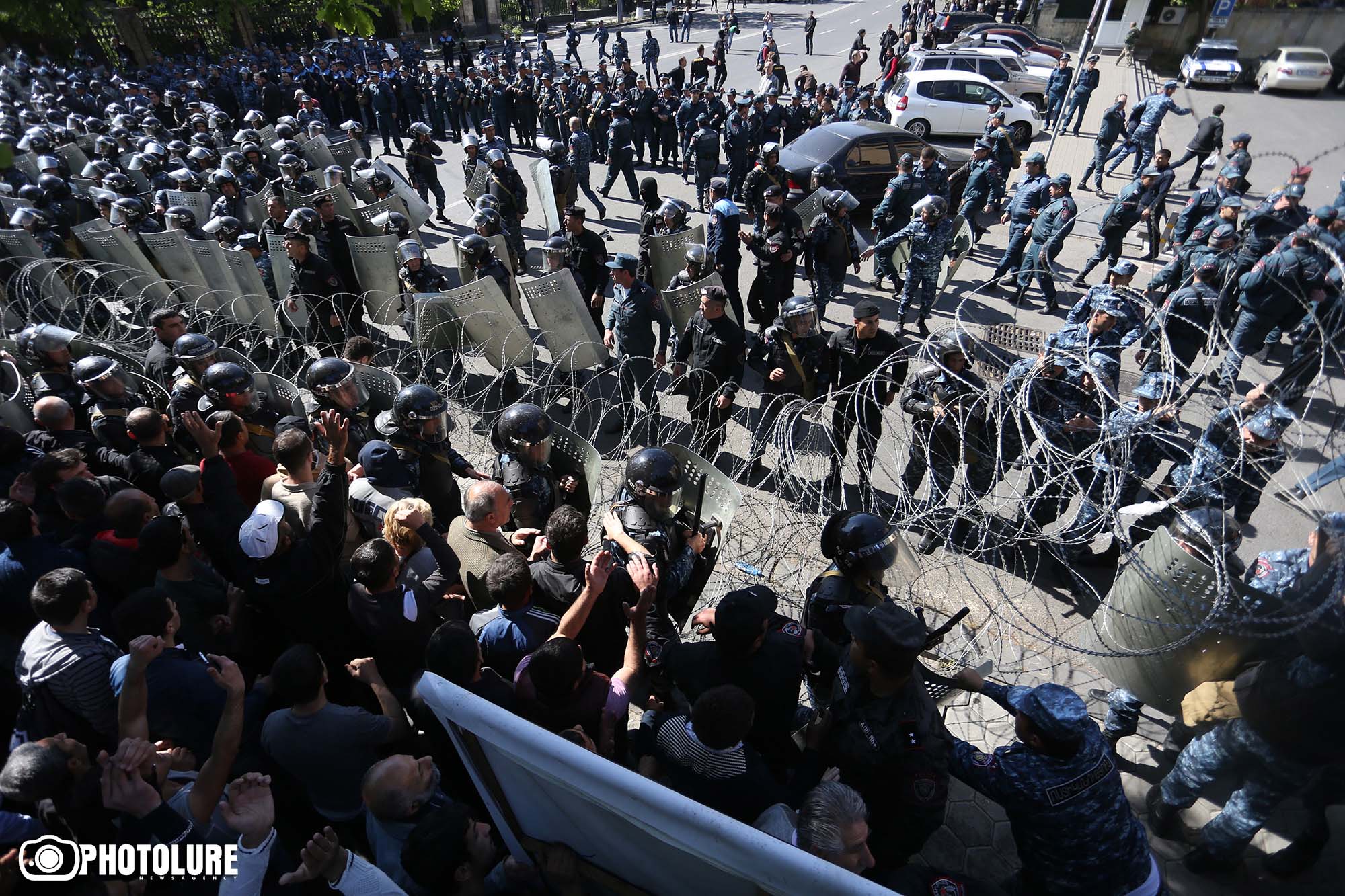
How Did Disobedience Actions Begin?
After two terms of presidency, from 2008-2018, Serzh Sargsyan’s nomination for the post of Prime Minister caused dissatisfaction among some opposition forces and citizens. Nikol Pashinyan, co-leader of the opposition “Yelk” faction, stated that through civil disobedience citizens should express their dissatisfaction with Serzh Sargsyan’s desire to stay in office.
As a sign of protest, on March 31 Pashinyan, together with a group of supporters, initiated a campaign called “My Step” and had a 14-day march tour through 6 cities of Armenia, including Vanadzor, Spitak, Dilijan, Sevan, Hrazdan, Abovyan to Yerevan where they stopped on April 13. Other member parties of the bloc “Yelk” – “Bright Armenia” and “Republic” parties – did not join this initiative, claiming that the opposition should remain in the field of formal, constitutional activities.
On April 13, a rally took place at Liberty Square in Yerevan, after which the participants marched to France Square near the National Opera and Ballet Theater, closing the crossroad of Mashtots avenue and Sayat-Nova street. On April 14, participants of the rally marched to the Public Radio building. Nikol Pashinyan and his supporters came in the building and Pashinyan demanded to provide him live broadcast. Pashinyan’s request was rejected, and the electricity in the building was disconnected.
Next day, on Sunday, April 15, Nikol Pashinyan published a civil disobedience action plan at France Square, according to the plan it was supposed to close down the central streets of Yerevan, subway stations, to hold strikes.
Is it possible to dissolve the National Assembly?
According to the members of “Civil Contract” party, the National Assembly will be dissolved if the Prime Minister’s election is not held on April 17 and on the next 7 days. However, according to constitutionalist Vardan Poghosyan, the National Assembly may be dissolved only if the Prime Minister’s candidacy is debated, voting held, and if no one is elected Prime Minister following the vote. If it is impossible to convene a session in the National Assembly due to some obstacles, then the session could take place at some other venue and continue the election.
Experts on Constitution do not have a unanimous answer to the following question: who is the head of the country in the current stressed situation. On April 9, 2018, the day of inauguration of the newly elected President of Armenia, Armen Sarkissian. the Government resigned and the powers of former president Sargysan concluded.
According to constitutionalist Karen Ayvazyan, from April 9-17, until the election day of the new Prime Minister, leader of Armenia is the incumbent Prime Minister, who, however, does not have the powers of a Prime Minister under the new constitution during this period.
Meanwhile, according to constitutionalist Gevorg Danielyan, the acting Prime Minister Karen Karapetyan can exercise the powers of a Prime Minister under the new constitution.
Online Broadcasting
- EVN REPORT
- Azatutyun TV – RFE/RL
- Civilnet
- News.am
- A1+ TV
- Nikol Pashinyan’s Facebook account
- Shant News
- Factor TV
Photos
Hashtags on Facebook & Twitter
#քայլարա #ՄերժիրՍերժին #իմքայլը #RejectSerj #միացեք #ցուցարարներ #mystep #merjirserjin #մենքենքտերըմերերկրի #protests #civildisobedience #yerevan #activist
By Ampop Media
ATTENTION © The copyright of stories and visual images of Ampop.am belongs to “Journalists for the Future” NGO (JFF). Dissemination or republication of the content and visual images should contain the hyperlink to the story.
Փորձագետի կարծիք
First Published: 16/04/2018


